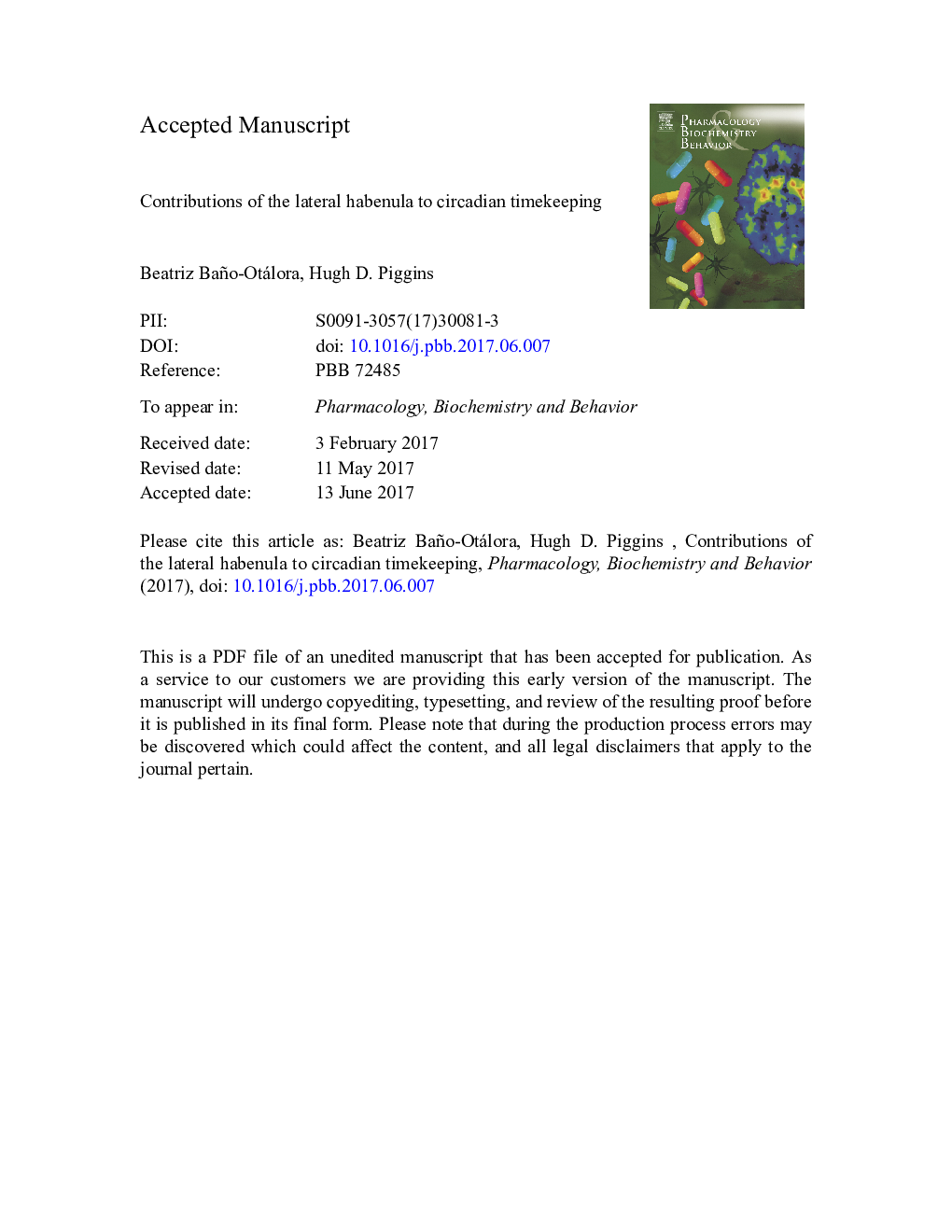| Article ID | Journal | Published Year | Pages | File Type |
|---|---|---|---|---|
| 8350198 | Pharmacology Biochemistry and Behavior | 2017 | 32 Pages |
Abstract
Over the past 20Â years, substantive research has firmly implicated the lateral habenula in myriad neural processes including addiction, depression, and sleep. More recently, evidence has emerged suggesting that the lateral habenula is a component of the brain's intrinsic daily or circadian timekeeping system. This system centers on the master circadian pacemaker in the suprachiasmatic nuclei of the hypothalamus that is synchronized to the external world through environmental light information received directly from the eye. Rhythmic clock gene expression in suprachiasmatic neurons drives variation in their electrical activity enabling communication of temporal information, and the organization of circadian rhythms in downstream targets. Here, we review the evidence implicating the lateral habenula as part of an extended neural circadian system. We consider findings suggesting that the lateral habenula is a recipient of circadian signals from the suprachiasmatic nuclei as well as light information from the eye. Further we examine the proposition that the lateral habenula itself expresses intrinsic clock gene and neuronal rhythms. We then speculate on how circadian information communicated from the lateral habenula could influence activity and function in downstream targets such as the ventral tegmental area and raphe nuclei.
Keywords
VTALHbipRGCsSCNRMTgGRPSFRFasciculus retroflexusAVPspontaneous firing rateTTFL5HTsuprachiasmaticTTXVIPDMHPER2::LUCeGFPpK2LUCLHbLLHbMDBSHabenulaMedial habenulaMHbtetrodotoxindeep brain stimulationlateral habenulaperDopamineCircadian rhythmSerotoninintrinsically photosensitive retinal ganglion cellsluciferasePVNlateral hypothalamic areaventral tegmental areaSuprachiasmatic nucleidorsomedial hypothalamusarginine vasopressinProkineticin 2Vasoactive intestinal polypeptidegastrin-releasing peptideperiod geneClock genesCry
Related Topics
Life Sciences
Biochemistry, Genetics and Molecular Biology
Biochemistry
Authors
Beatriz Baño-Otálora, Hugh D. Piggins,
